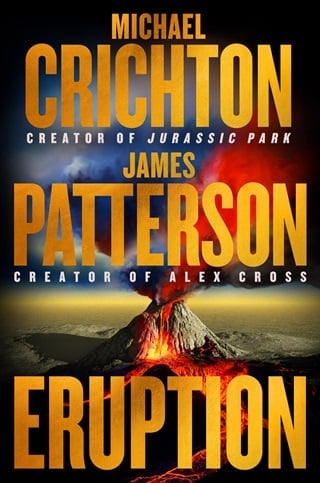Chapter 26
Glowing volcanic avalanches had destroyed Pompeii in AD 79 and had flattened whole islands near Krakatoa in 1883, but they remained a phenomenon unknown to science until 1902, when the volcano Mount Pelée erupted on the Caribbean island of Martinique.
Pelée had been restless for months, but no one was prepared when, at 7:52 a.m. on May 8, 1902, an avalanche of red-hot gas and ash roared down the mountain at five hundred kilometers an hour; it destroyed the town of Saint-Pierre and most of the ships anchored in the harbor.
Twenty-nine thousand people died, many almost instantaneously.
The handful of surviving eyewitnesses—the lucky ones on boats far enough out to sea to avoid the gas cloud—described a scene of hellish destruction. Photographs of the town reduced to smoking ruins made the front pages of newspapers around the world.
The avalanche that had caused this instantaneous destruction was termed a nuée ardente, or "fiery cloud." It ripped through three-foot-thick concrete walls, smashed whole buildings, tore heavy cannons from their mountings, and snapped a lighthouse in half like a twig.
These avalanches were now termed pyroclastic flows and were the focus of intense study by volcanologists. Numerous attempts had been made to model their behavior in laboratories. Jenny Kimura had worked on it one summer at the Osservatorio Vesuviano near Naples, part of a team that made models of hot lava flows in a sloped laboratory tank, and she had also done computer modeling of these flows. She knew more about pyroclastic flows than anyone at HVO, including Mac, but she didn't say anything at first. It was one of the things Mac liked about her, sometimes loved. Jenny let the game come to her.
"Okay, let's think this through," Rick said. "Let's say you succeed. Then what?"
"Then we'll have blown open the vent and released the lava," Mac said.
"And sent a pyroclastic flow racing toward Hilo." Rick pointed down the mountain.
"It'll never get there."
"You hope."
"Rick, I'm telling you it won't," Mac said. "The slope is too gentle; the avalanche can't sustain. It'll die out in three or four kilometers."
"But isn't how far it goes a function of the initial blast, Jen?"
Mac wanted to smile. Rick was challenging them the way Mac always challenged him.
Jenny shook her head. Now she was ready to engage. "Mac's right. It'll never get to Hilo."
"For now," Briggs said, "we don't want Dr. MacGregor to just tell us how his plan might work. We want him to show us. With the understanding that we in the United States Army have not ruled out the building of walls at this time."
"Fair enough. Follow me," Mac said. He was the one giving the orders now.
Mac led them all over jagged lava fields for half a mile, then got down on his hands and knees in front of a hole that was just big enough to squeeze through.
"This one's a typical lava tube opening," he said to the group. "Just be careful when you come through. And don't keep going forward. Move to the right."
He crawled through the hole, and the others followed him one by one.
Once inside, Mac switched on his phone's flashlight app because the tube was pitch-black. As the others came through, they switched on their phones. Yellow beams crisscrossed like searchlights.
They found themselves in a domed pocket the size of a high-school gym. The ceiling was smooth, almost shiny, but the floor was rough black lava.
"This is a typical air chamber," Mac said, his voice echoing. "It's a bit like being inside a bubble. The magma releases gases as it rises, and if those collect in a big bulge, you get this smooth surface that you see above us. The lava flows continuously beneath this air pocket and often forms a second and even a third chamber. The ceilings of those chambers may break open, making a large pit. If you move carefully forward, you can see down into the pit here. Just don't get too close to the edge—it's thin. And it's a long drop."
"That's putting it mildly," someone behind him said, shining the light down.
The pit was a hundred meters deep, perhaps more. It was hard to be sure; the light beam vanished into the blackness of the lava tube as if it had been swallowed up.
One of the AOC men said, "Exactly how many chambers like this are there, Dr. MacGregor?"
"Dozens," Mac said. "Maybe more than that. We just have to choose the right ones."
The critical issue, Mac told them, was whether the HVO really was able to pinpoint the exact location of the magma beneath the surface. If they knew the location of the magma pipes within a few hundred meters, they could choose three or four air chambers that were directly above the rising magma, place explosives, then fill them with water.
"All in four days," he said. "Or the whole thing is pointless."
He looked at them, their faces illuminated by the various phone flashlight apps.
Earlier, as he was talking, the AOC team had produced some nylon line, and now they started lowering one of the men into the pit.
"They don't waste any time, do they?" Rick said.
"We have none to waste," Briggs said. He turned to Mac.
"We might be able to do this in four days," Mac said. "It'll be tight, but I think we can."
Briggs nodded. "There's no way in hell to keep this job a secret. You're talking about a lot of personnel, a lot of equipment on this mountain. You can't hide it."
Jenny Kimura said, "Couldn't you say the army is doing something up here? Something of a positive nature?"
"Like what?"
"I don't know. Repairing our access roads. We've lost some crucial access roads and the army is helping repair them."
"You really think we can sell that?" Briggs asked.
"The visuals alone can sell it," Jenny said. "This is the age of social media. All anybody cares about these days is how things look." She turned to Mac. "You know that big fissure on jeep trail four at about nine thousand feet?"
"The one that's been around since Truman was president?" he asked.
"Since 1950, to be exact," she said. "It's a good twelve feet deep and maybe eight feet wide. You show that in the afternoon when it's in shadow, and it's very dramatic."
"There's also a road that skirts around it."
"Right. But it skirts wide, and it's black-on-black lava. If we take the reporters up by helicopter from the Kīlauea side, they'll never see the bypass road."
"You want to take reporters up and show them a seventy-five-year-old vent?" Mac asked.
"They'll love it for the pictures alone, Mac." She turned to Colonel Briggs. "Do you have your uniform with you, sir? We'll need you in uniform."
"For what?"
"For the photo of you and Mac standing at the edge of the fissure, talking about the repairs. It'll look like you're standing at the edge of the world."
"I'd rather not appear." Briggs seemed uneasy. "I'm not the CO on the Big Island."
"Well, we'll need someone in uniform talking with Mac," Jenny said. "To make it into a movie moment."
"Let me make some calls," Briggs said.
The AOC team came back from the pit. Morton said, "We've been over this, and we've concluded there is a high probability it can work."
No shit, Sherlock,Mac thought.
Morton continued, "We're assuming five locations on the mountain, each with chain-linked resonant charges set as far as we can drill into the thick basalt. The sequencing begins with small charges that detonate very rapidly, like firecrackers. Then they get slower and slower until they're every quarter second or so."
He turned to address Briggs. "The problem is that these arrays have to be self-timed, using sensors within the blast material to give feedback to the computers that control the sequencing. So once it starts, it just keeps going."
"And you can get this ready in four days?"
"No, sir, we can't. We need a minimum of seven days for computer programming."
Briggs said, "We don't have seven days."
"I've been listening, sir. I'm aware that we don't."
"So what are you telling me?"
"We need to outsource this job. A few commercial demolition companies have proprietary software for sensors. They don't need programming time because their computers are hard-coded to do it themselves."
"Whom do you suggest?"
"We think the best is Cruz Demolition, out of Houston. They've done a lot of work for the army, and they're fast as hell."
"How long to get them here?"
"Actually, sir, they have a team on-island now."
"What? Here?"
"Honolulu. I believe they're blowing up a building next to a shopping center."
 Fullepub
Fullepub 



